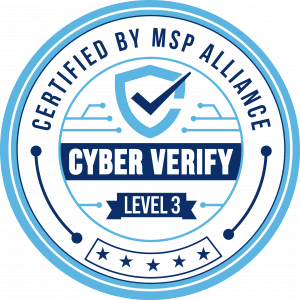Cost Savings and Business Benefits Enabled By Mainstream’s Custom Software
Executive Summary
Mainstream Technologies provides custom software development solutions to help its customers design strategic technology systems and business processes. Mainstream commissioned Forrester Consulting to conduct a Total Economic Impact™ (TEI) study and examine the potential return on investment (ROI) organizations may realize by engaging with Mainstream for a custom software development project. The purpose of this study is to provide readers with a framework to evaluate the potential financial impact of a similar custom project within their own organizations.
To better understand the benefits, costs, and risks associated with this investment, Forrester interviewed one government agency that engaged with Mainstream to build a modern version of its database and redesign its internal processes to improve productivity and efficiency.
This system replaced the agency’s outsourced legacy mainframe, which over the past several years had dramatically increased in cost. The system served as the central liaison for data used by 30-plus other agencies and over 100,000 government employees nationwide. Due to poorly designed and documented architecture, system downtime and errors were common issues for system users both within the agency and at other external government entities, who relied on consistent access to this critical data to support their key services. Internally, the agency’s business processes were inefficient, manual, and heavily reliant on paper, and the agency also faced significant challenges in both hiring and retaining skilled COBOL (common business-oriented language) programmers due to a small, aging pool of qualified developers. The agency had already made one attempt to rebuild the system, but the other vendor the agency hired ultimately failed and no progress was made.
This agency turned to Mainstream to carefully analyze the architecture of its current system, observe its business processes, and interview stakeholders from across the process chain. Mainstream then developed a new system architecture that carefully replaced the database with no interruption in service to users. Mainstream simultaneously redesigned internal processes to improve productivity, and is engaged with the agency for three more years to improve many other processes agency-wide.
Key Findings
Quantified benefits. The interviewed organization experienced the following five-year risk-adjusted present value (PV) quantified benefits:
› Reduced legacy system costs saved $1,732,593. The government agency avoided significant increasing outsourced costs to support its legacy mainframe. The agency also eliminated a continuous form printer and decreased incremental printing costs by digitizing its processes.
› Improved business process efficiency recaptured $1,048,325 in employee productivity. The organization digitized and streamlined a key process to reduce the time to complete 40,000 annual manual entries by 15 minutes per record. Through its continued engagement with Mainstream over the next three years, the agency expects to extend similar savings across several other internal processes.
› Reduced labor costs for hiring and overtime due to a larger applicant pool of C# developers saved $687,504 over five years. With a larger pool of applicants, the agency could identify and place applicants faster in order to reduce internal overtime and save recruiting costs. This larger applicant pool also enabled the agency to bring in less experienced employees at a lower pay rate to perform the same work, reducing long-term human resources overhead.
Unquantified benefits for the agency. The interviewed organization expects the following benefits, which are not quantified for this study:
› Reduced system downtime and errors resulting from excess points of failure will improve productivity for agency employees.
› Improved database security reduces the risk of breaches.
› Simplified web connectivity will enable faster integration with new or changing systems at other agencies.
Unquantified benefits for other government entities. This project enables benefits for other government entities, ultimately reducing taxpayer costs. These are discussed but not quantified in this study:
› Reduced downtime and errors will improve productivity and outcomes for other taxpayer-funded entities and their employees.
› Cost savings for other government agencies were achieved by reduced per-transaction costs on millions of annual transactions. Costs. The interviewed organization experienced the following risk-adjusted costs:
› Custom software development costs of $2,072,462.
› Internal labor costs of $230,367 for due diligence, project management, testing, and systems administration.
› Hardware and software upgrades valued at $35,652.
Forrester’s interviews with an existing customer and subsequent financial analysis found that the interviewed organization experienced benefits of $3,468,423 over five years versus costs of $2,338,480, adding up to a net present value (NPV) of $1,129,943 and an ROI of 48%.
To view the full report, click here.





